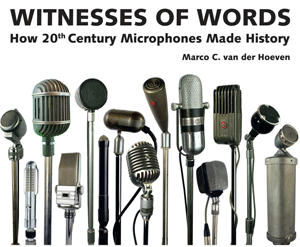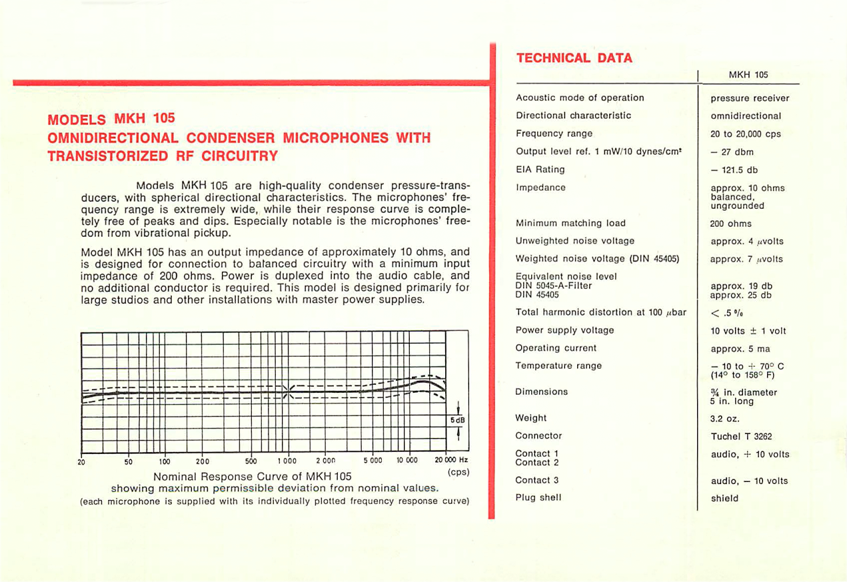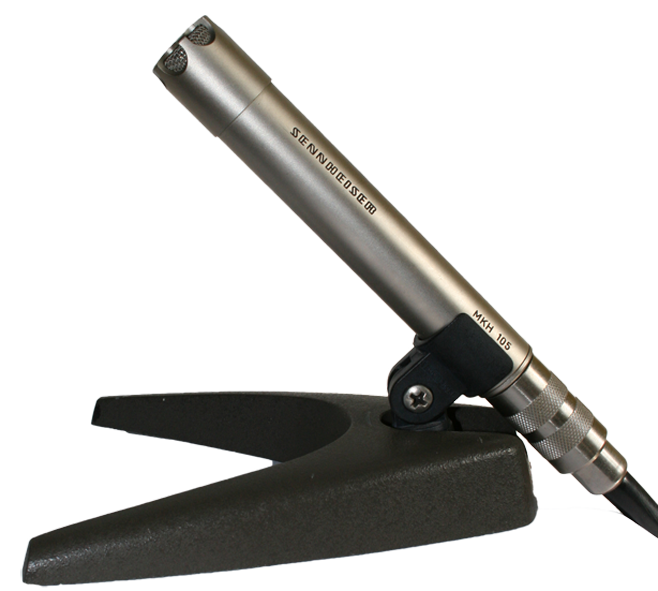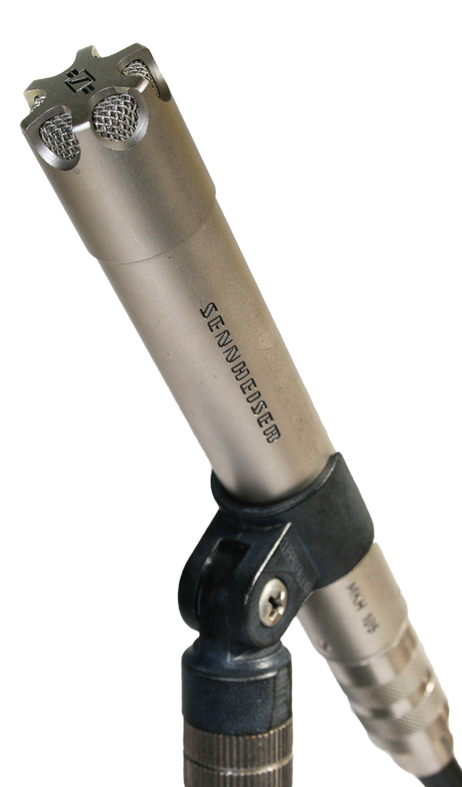|
The Sennheiser MKH 105 omnidirectional condenser microphone was an early outlier, in 1963. It became the starting point for Sennheiser's successful range of condenser microphones
It was the era in which the electron tube had to make way for the transistor, but because an electron tube in a microphone could not simply be replaced in a circuit by a transistor, which had a much lower impedance, something new had to be invented.
It was convenient that Frits Sennheiser had conducted research into high-frequency signals during the Second World War; RF (Radio Frequency) technology.
He devised an RF system in which a capacitor capsule could be coupled to a transistor. By using an oscillator that produces a high-frequency signal, the recorded sound is modulated and immediately afterwards demodulated again into a normal sound signal. An RF microphone actually contains a transmitter and a receiver that are linked together (there is no wireless radio signal, there is 'normal' sound from the microphone).
The result is a pure signal, with little distortion. By then electronically adjusting that signal, a very 'straight' recording characteristic is achieved, whereby the low tones are also reproduced very well. The latter is otherwise only possible with larger capsules, smaller ones are better for recording high tones.
There was even a special version, the MKH 110, which could record low frequencies down to 1 Hz, an ideal measurement microphone.
The advantages of the transistor were clear, because Sennheiser managed to mount the models in a housing with a diameter of only 2 cm and a length of only 12.5 cm. That left no room for an output transformer, the signal was electronically balanced.
Because the FET transistor was introduced around that time, which could be used instead of a tube, most manufacturers chose to go that route. Sennheiser, who had no history as a maker of tube microphones, continued with his own RF designs, in which he saw many advantages, including the lower noise of ordinary transistors compared to FETs.
The first Sennheiser condenser microphones were the experimental MK 82 'shotgun' and the omni MKH 104, from 1962, which required a special 8 Volt power supply. The MKH 105 was equipped with the then newly developed T-power supply (predecessor of Phantom Power).
The 12 Volt T- power supply could be used not only in the studio, but also outside of it, with a simple adapter that contained 9 small batteries, on which an MKH could operate for more than 50 hours.
The insensitivity to contact noise and interference and problem-free use in humid conditions also made the microphones ideal for location recordings.
After the MKH 105, the directive MKH 405 followed, and the long MKH 805 'shotgun'. The series was later expanded with the MKH 415, a short 'shotgun'. The models from the series received the T designation.
When phantom power became the standard, Sennheiser presented the MKH 106/416/816, with a choice of 12V or 48V these had a 'P' designation (MKH 106 P12 / 106 P48 etc.).
The MKH 416 T remained available, because the model was often used for location recordings and the recording equipment often worked with T-Power.
Omni microphones are often seen as the ideal microphones for recording and the MKH 105 may be old, but the quality is still excellent after 60 years. Sennheiser later adapted its RF technology for the digital age, to further eliminate distortion .
The MKH 416 is still made and is part of the 'Classic' range, although that model was also modified in the 1990s to simplify production. The quartz crystal was replaced by an LC circuit (a coil and capacitor, which together form a resonant circuit) for even greater operational reliability.
The Sennheiser MKH series, old and new, is still popular.
Many more types feature in my book Witnesses of Words. More information about that can be found at www.witnessesofwords.com

|
|
|
|
|
|
Above: two sides of the small MKH 105 T & MZ-15 adapter
Below: sound, cirquit diagram, specs and T-Power schematic |
|
|
 |
 |
|


 Video's
Video's Contact
Contact







